What are the different types of Japanese soup? Wondering what is Japanese soup called? (Hint: It’s pronounced soo-pu.)
You have questions and here are the answers.
In this quick guide, you’ll learn about the 12+ different types of Japanese soup, plus their benefits. Just in case you’re on a soup eating spree or looking for a new Japanese soup to try.
So, take a look.
1. Miso soup
Of all the types of Japanese soup out there… Miso soup has to be the most popular Japanese soup. You’ll know it by its cloudy look.
Miso Soup Benefits:
- Contains probiotics (good for your gut/digestion)
- Good source of electrolytes (sodium/salt)
- Reduced risk of heart disease (isoflavones in soybeans)
- Reduced risk of stomach cancer (among women) and liver cancer due to soy
- Alleviation of menopause
-
- Source: WebMD
-
- When it’s eaten: Daily. With any Japanese style meal.
Miso soup is made with miso paste, dashi broth, and can include a wide range of ingredients. The ingredients are usually radish, tofu, green onions, fried tofu, and mushrooms. But, there is no set rule for the ingredients so each Japanese household will have their own variation. This soup can be eaten with any kind of Japanese style meal. The miso paste can be great for gut health and mineral content.
- Note: Since Miso soup is made from fermented soy, avoid it if you have soy allergies.
How much salt in miso paste? One teaspoon contains about 0.2 to 0.3 grams of salt an done serving is about 1-2g.
- Note: It’s salty. So, if you need to watch your salt/sodium intake, don’t go eating too much. Middle-aged and elderly people need to keep their salt intake low to avoid high blood pressure. Source
2. Tonjiru
- Benefits: Plenty of minerals from the veggies and miso paste.
- When it’s eaten: Winter.
Tonjiru is a typical Japanese soup that is popular during the winter months. The broth is flavored with small pieces of pork and miso paste. The flavors are rich and fatty because of the pork. Ingredients are usually carrots, burdock root, konjac, radish, and more. Tonjiru can be a healthy soup to eat more vegetables and the miso paste provides essential minerals.
3. Suiton
- Benefits: Low fat and low calorie.
- When it’s eaten: Anytime. Not as popular nowadays.
Suiton is a Japanese flour dumpling soup which can be in either a clear or miso broth. This was a soup that was popular during the late Edo period. These days, they are not as popular but can still be enjoyed as a healthy and cheap meal. The dumplings in the soup are not filled, but are simply rolled flour dough that is cut by hand. The soup can also include other ingredients like radish and mushrooms. This soup is great for a low fat and low calorie diet.
4. Osuimono
- Benefits: Good for digestion. Low calorie.
- When it’s eaten: With traditional Japanese meals.
Traditional Japanese meals always include one kind of soup to go with the meal. Osuimono refers to a soup that uses a clear broth. These broths can be flavored with fish or kelp. The ingredients can range from clams, vegetables, and tofu. This light soup is great for your digestion and if you’re looking for a low calorie soup.
5. Kimosui
- Benefits: Contains vitamins and is good for skin.
- When it’s eaten: With traditional Japanese meals.
If you go to a traditional eel restaurant in Japan, you’ll likely be served kimosui on the side. This soup is made with a clear dashi broth and includes a small piece of eel liver. Other ingredients can include fried tofu and Japanese mustard greens. It provides a light accompaniment to the heavy grilled eel. Eel has been said to be good for skin health and includes many important vitamins.
6. Kenchinjiru
- Benefits: Improved gut health and a reduced risk of diabetes..
- When it’s eaten: With traditional Japanese meals.
This is a soup that originated at a Japanese temple called Kencho-ji. It is a soup made with many kinds of root vegetables, tofu, and sometimes meats. The broth is flavored dashi and some sesame oil. A unique element of this soup is that the ingredients are often stir-fried before being added. This adds more flavor and richness. Health benefits of the soup include improved gut health and a reduced risk of diabetes.
7. Oshiruko
- Benefits: Fiber & protein.
- When it’s eaten: For dessert.
Oshiruko is a Japanese dessert soup made with sweet red beans and mochi rice cakes. This is usually served warm with optional chestnuts. If you enjoy sweets but are looking for healthier alternatives, oshiruko can be extremely healthy. The sweet red beans are rich in fiber and proteins. The caloric content can also be lower than other desserts.
8. Noppe/Noppei
- Benefits: Plenty of vitamins from all the veggies.
- When it’s eaten: During festivals and New Years in Niigata.
A thick soup popular in Niigata prefecture, this soup usually uses leftover vegetables. The ingredients are often sauteed together before being added to the soup. Noppe broth is made with soy sauce, the boiled ingredients, sesame oil, and some kind of starch. This creates a thick texture to the soup that can keep you warm. In Niigata it is often served during various festivals and celebrations. Because there are so many vegetables, it is a healthy soup that can provide lots of nutrients.
9. Ozoni
- Benefits: Low fat. Prevents heart diseases.
- When it’s eaten: New Years celebration.
This is a typical soup eaten during the New Year’s celebration in Japan. It’s a soup with different types of vegetables and mochi rice cakes. Mochi rice cakes are toasted before being added to the soup. The type of broth, ingredients, and style of mochi can differ depending on the region of Japan. It is a low fat soup that can help prevent heart disease.
10. Kiritanpo
- Benefits: Plenty of vitamins from all the veggies.
- When it’s eaten: From September to March in Akita — during the rice harvest season.
Kiritanpo is a dish famous in the Akita prefecture. It is a stew that has special rice that has been pounded into sticks that are roasted. It is cooked in a large pot that is shared by everyone at the table. Other ingredients can include chicken, mushrooms, green onions, and burdock root. The broth is flavored with soy sauce, mirin, and sake. Since there is no added oil it is low in fat and easy to digest.
11. Chankonabe
- Benefits: Protein & Vitamins.
- When it’s eaten: When? Well, all the time by Sumo wrestlers.
This is a high-protein soup that sumo wrestlers eat to gain strength and weight. It is typically cooked in a huge pot that is shared by everyone at the sumo stable. The broth is made with sake, mirin, and dashi. Ingredients inside the stew can include all kinds of vegetables and high amounts of meats like chicken and fish. Although it has been associated with Sumo wrestlers, nowadays it’s possible to find chankonabe restaurants started by retired sumo wrestlers.
12. Motsunabe
- Benefits: Great source of vitamins and minerals.
- When it’s eaten: While drinking!
Motsunabe is a stew… or kind of hot pot…. that comes from the Fukuoka prefecture, and is popular all around Japan. It is made with the intestines of beef and pork, accompanied by cabbage and chives. To make the smell of the intestine more mild, the broth is made from soy sauce, garlic, chili pepper, and miso. This soup is popular to eat while drinking alcohol and can be a great source of vitamins and minerals.
Conclusion – Over to You
Now you know a bit about the different types of Japanese soup.
All are loaded with vegetables. All are very healthy. All are delicious.
Which one is your favorite?
Leave a comment!

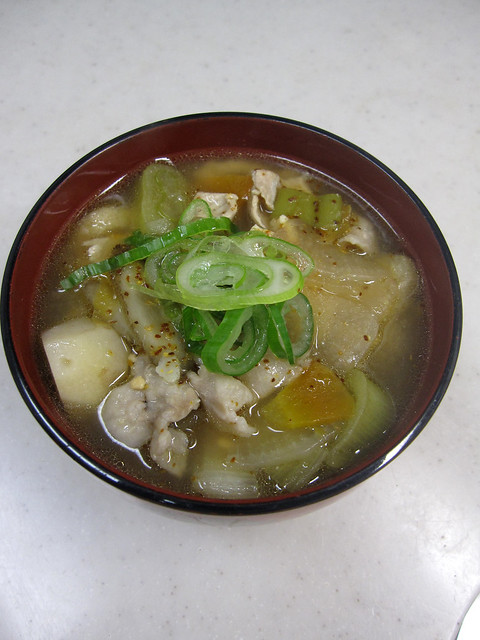


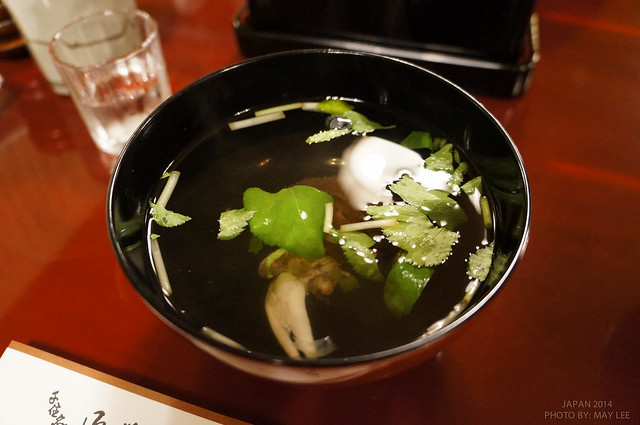
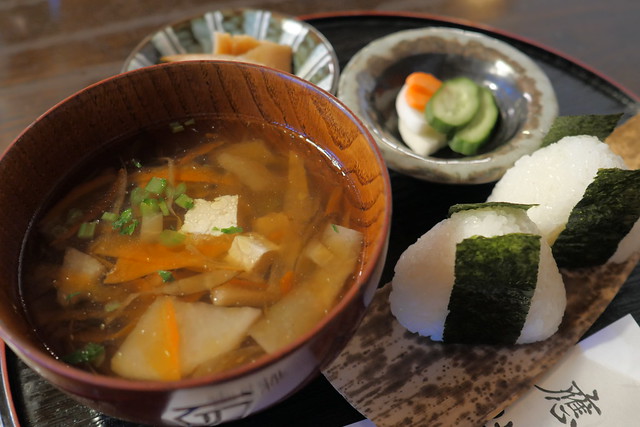
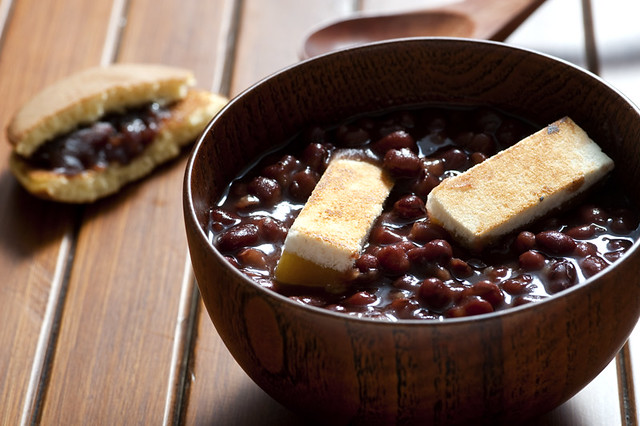
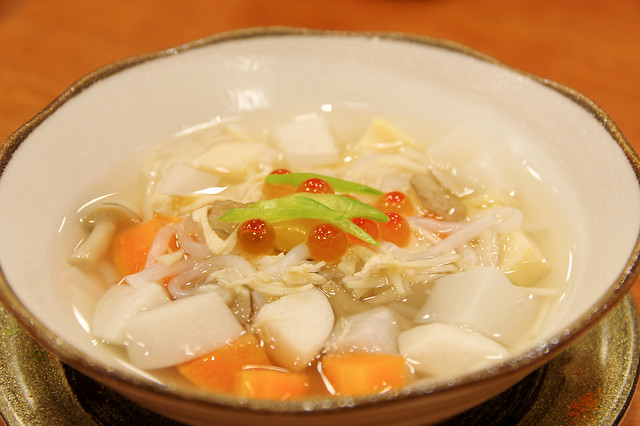
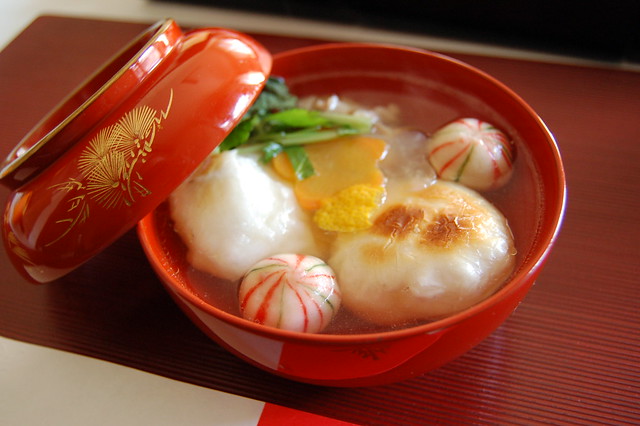


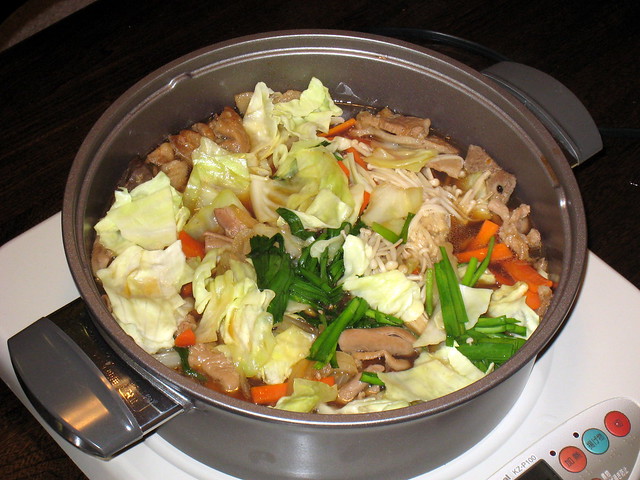
test